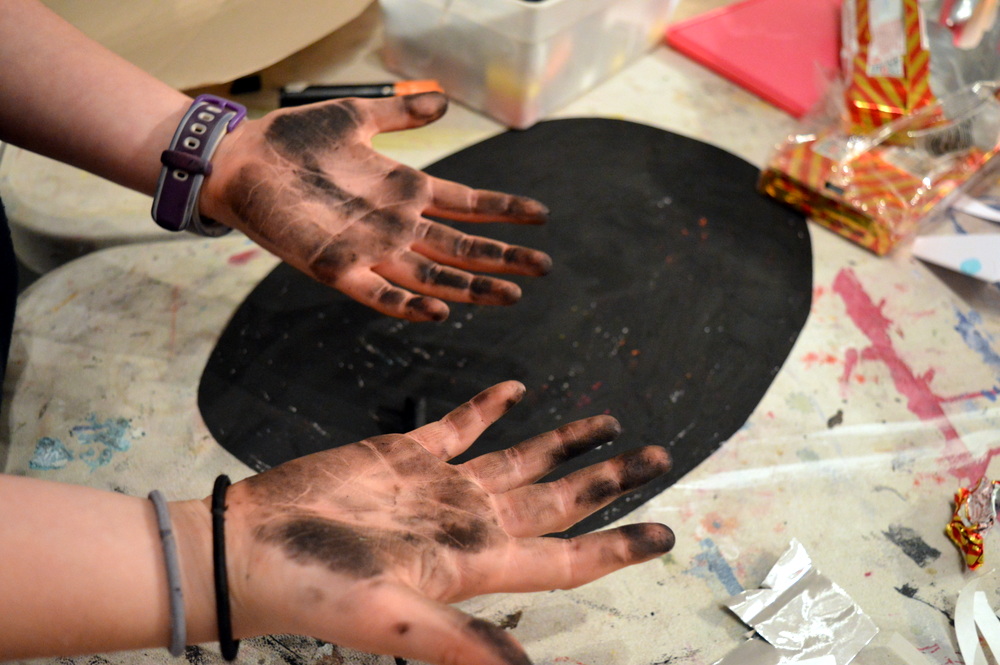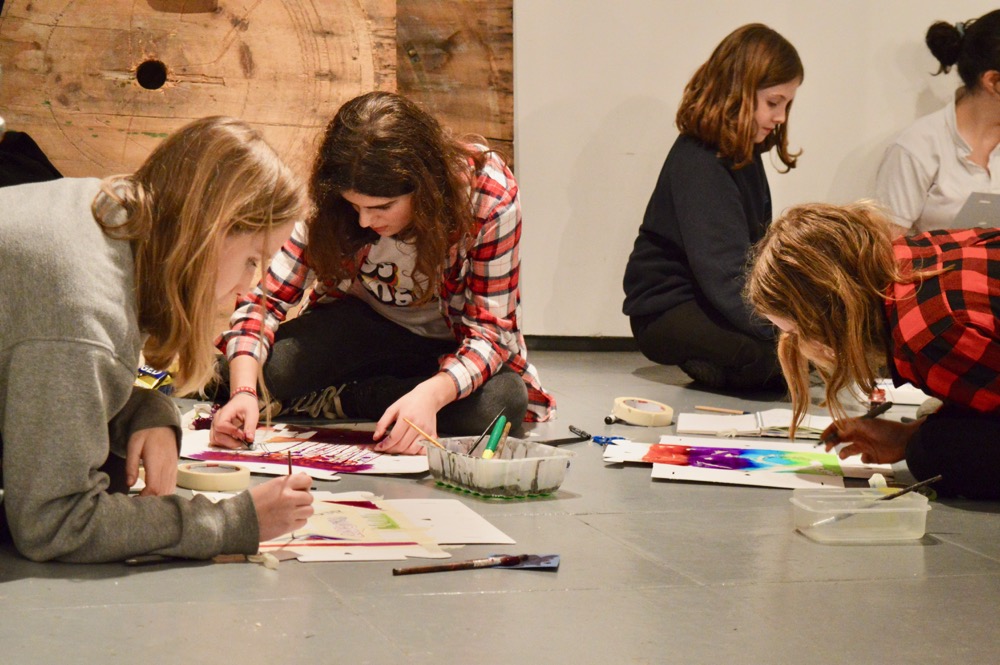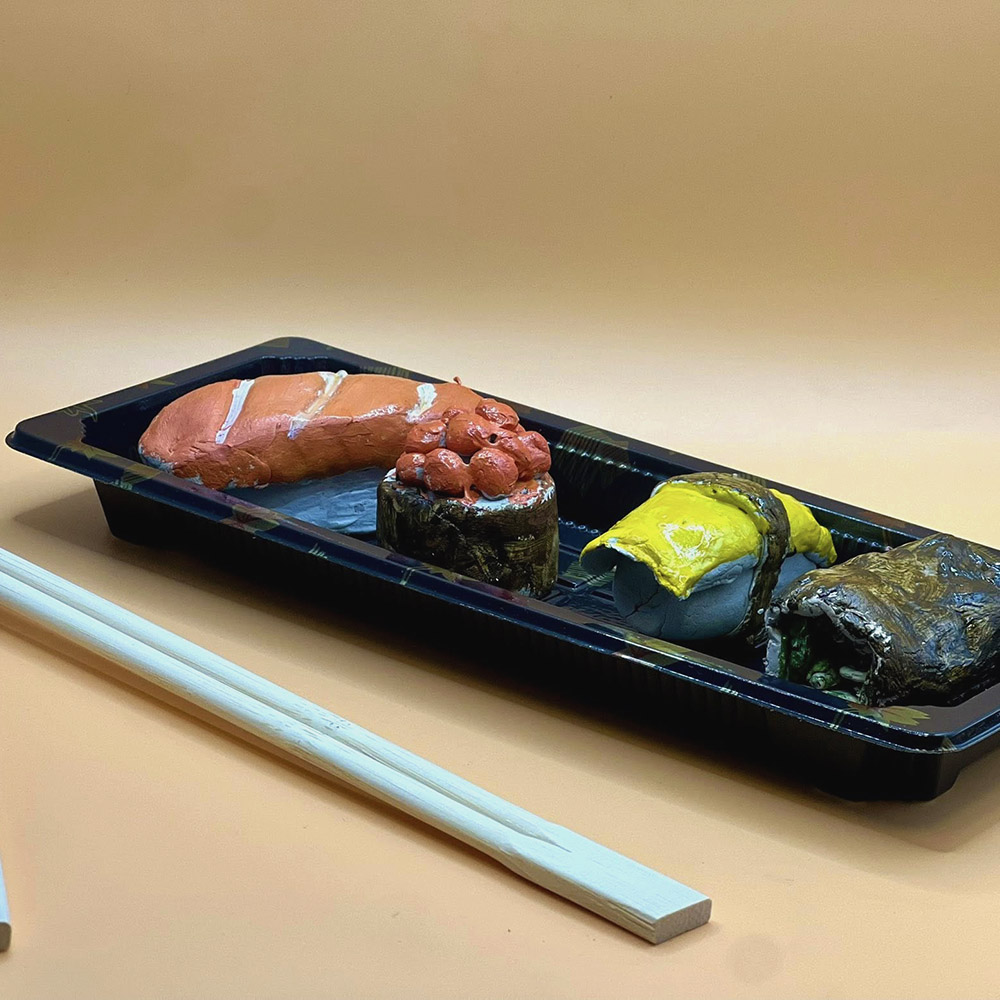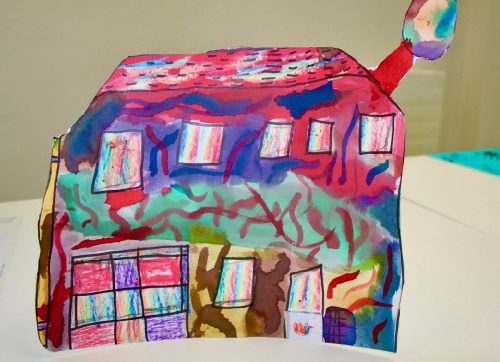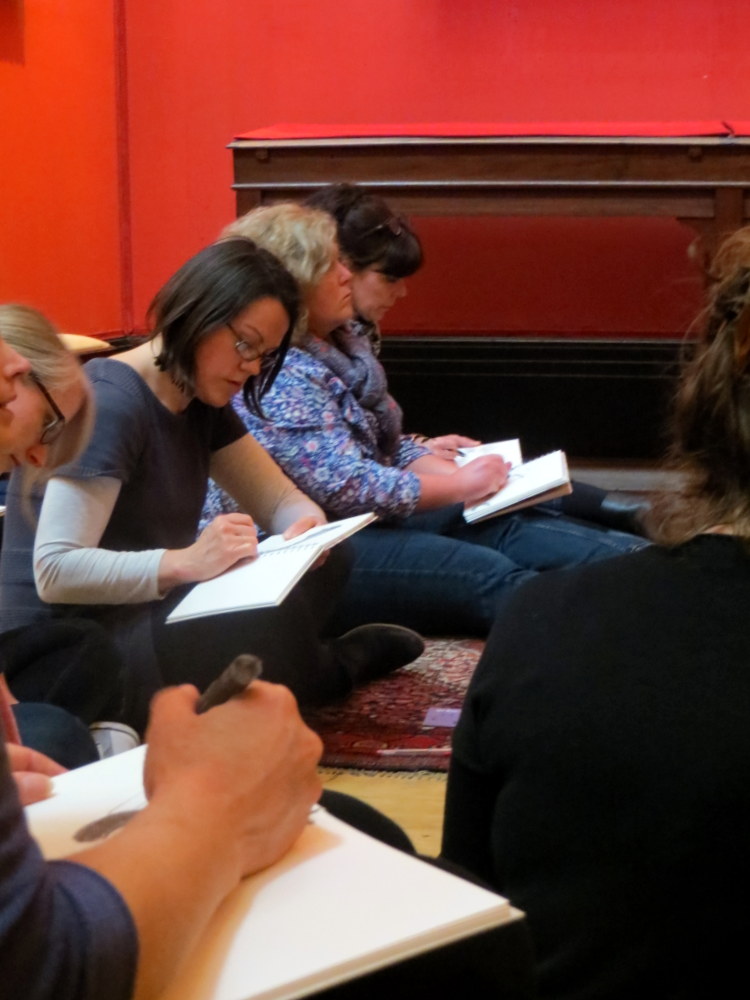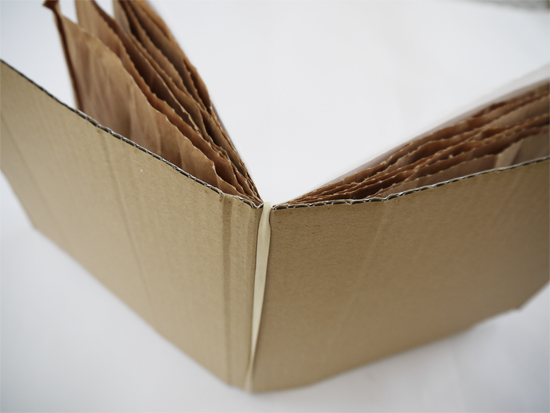This resource is part of a collection of resources by Jan Miller called Teaching Art to Year Three.
A fun end of term project that would also be perfect to do at home – making model Santas with character! Jan Miller share a process to make 3D model Santas using simple materials and processes. This activity can be used with children aged 7 to 14 (any KS, 2, 3 children).
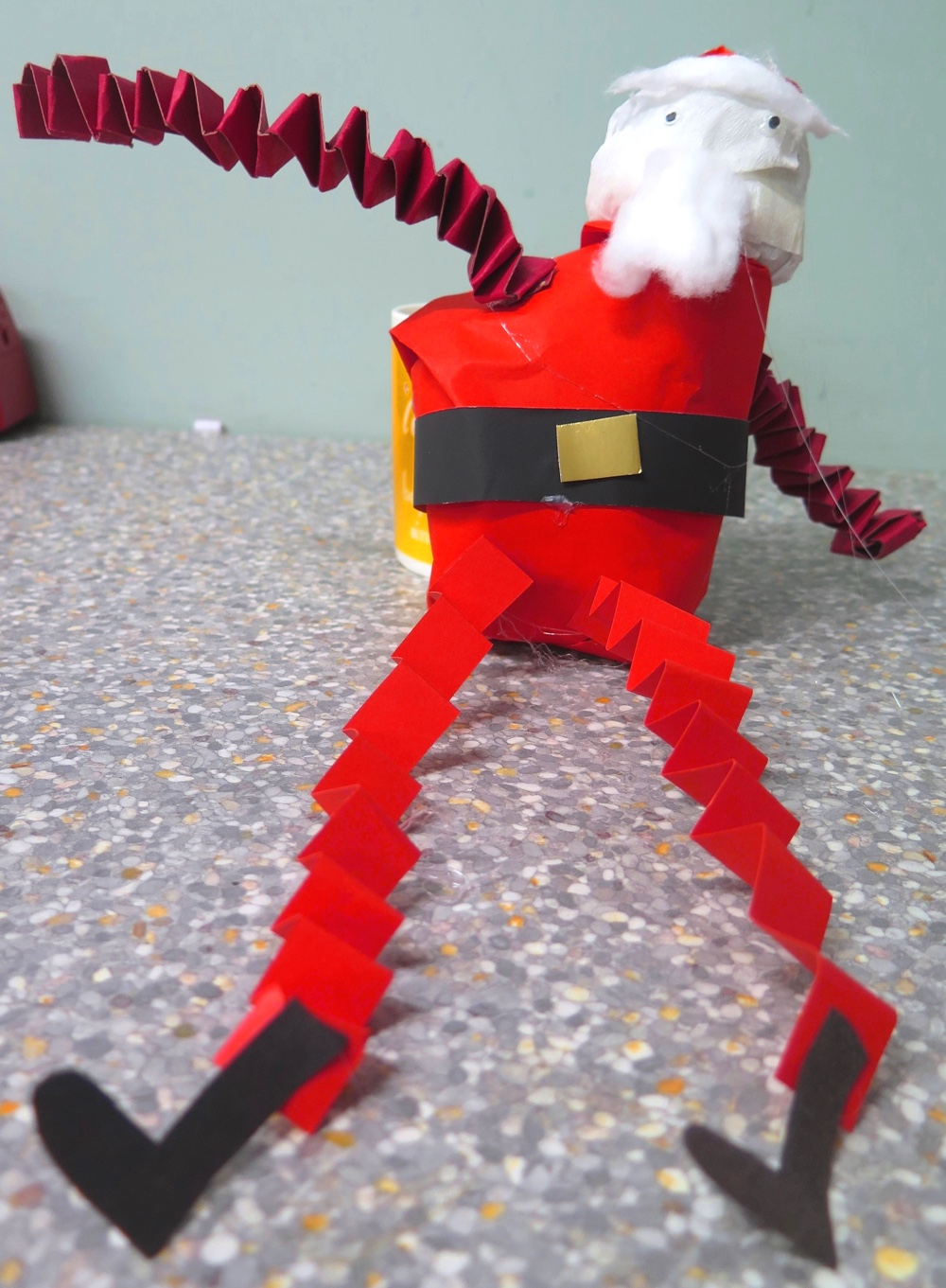
‘Can you make something Christmassy with the class?’ I was asked. Christmas cards with a moving Father Christmas, made with split pins, was my first thought. Then I remembered all the treasured little keep-sakes I had kept from my own children, that come down from the loft each year. The toilet roll wise man has a special pace on my window sill each year. Then I remembered my only surviving Christmas decoration that I made when I was that age. It is a Father Christmas made from crepe paper with a cotton wool beard, and apart from some sellotape repairs…you would not guess he is 38 years old!
‘Let’s carry them like Mary carried Jesus’ was a lovely quote, as the children carried their models with the same care as a real baby. I hope some of the children’s models survive, as keepsakes, to show their children!
Context
This project took 1 hour and was a perfect End of Term Christmas activity. I demonstrated how to make the basic model, but then the rest was their own design and I was just needed for the extra fingers to hold things while they cut their sellotape. They will certainly add some creative sparkle to any classroom and the children will be desperate to take them home. This is a lovely activity for parents to do with their children at the kitchen table, and can be easily adapted with whatever materials available. Model-making with a few basic materials hasn’t changed over the decades and neither has children’s enjoyment of these activities.
Aims
- Use sketchbooks to gather information – drawing your Santa first
- Use decorative materials to add interest
- Explore the possibilities of found or recycled materials
- Model 3-dimensionally, considering all sides
- Develop pragmatic skills, handle and shape tactile materials
- Celebrate an individual response, focussing on their intentions
- Working spontaneously, with pace, incorporating mistakes as review and edit to improve
- Learn and use specific skills to make a paper spring and a cone
- Use Mathematics to estimate and measure if needed
- Develop a project in which all abilities can feel a sense of achievement
- Support each other as they teach peers when they have worked out how to make a feature
- Cross curricular link with Literacy with stories being told about their particular Santa adventures
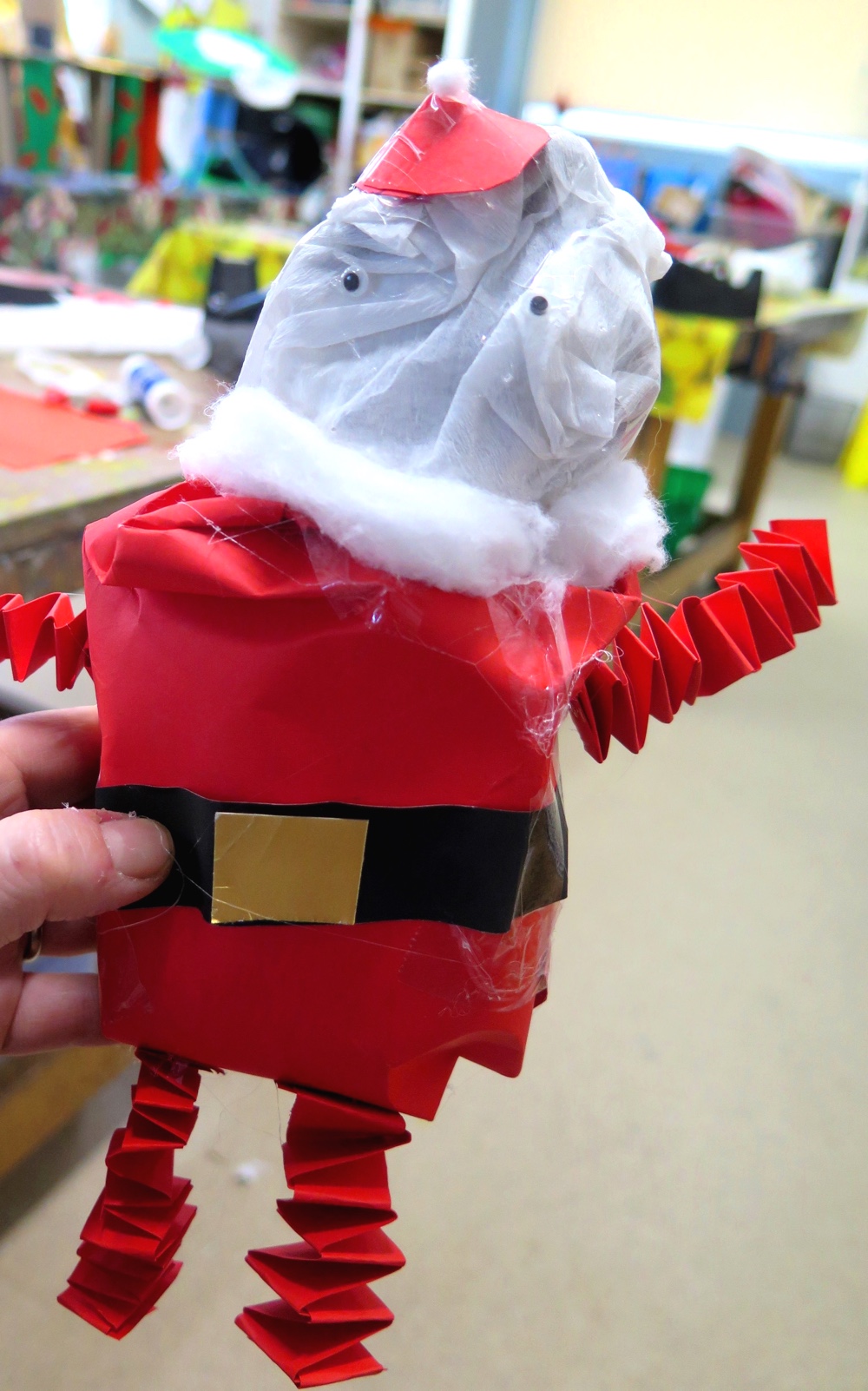
Who are the sessions aimed at?
Year 3 children, aged 7, completed their own Santas in this project. With a little more support, younger ones in KS1 could easily make. Equally, other KS2 would love to make.
Which areas of exploration are covered?
- Designing, if time. Drawing from memory and observation
- Develop Design & Technology knowledge of construction skills and mechanisms to create moving arms
- Exploring new materials for making art – exploring types of paper and card
- Learning through play and experimentation
- Working spontaneously
How much time is needed?
This was all completed in an hour, but can be split into two half-hour slots. If you were working with a smaller group of children the activities may take less time or can be extended. Pupils developed an understanding of process and materials and feel a sense of ownership over their model. The teacher could complete more of the preparation – allocating materials in tubs on tables or making the newspaper balls if pupils are younger. Sketchbooks were available and some sketched Santa and made notes, planning what materials were to be used. The lesson could involve the children drawing their labelled plan of intentions initially but I preferred spontaneous making for this task.
Extension ideas
- Some made presents by wrapping a square of card and using wool or pipe cleaner for the bow
- Some put elastic for Santa to bounce
- Some took photos of their model, and printed out to make a card
- Some used a soap powder box to make a ‘sleigh’ by turning the box ‘inside out’ and decorating
- Could make a pom-pom hat with card rings
- Some added string around the neck and a small bell
- The basic shapes can be decorated for a snowman, elf etc.
TIP
Supervised dots of cool melt glue gun are perfect to secure something instantly.
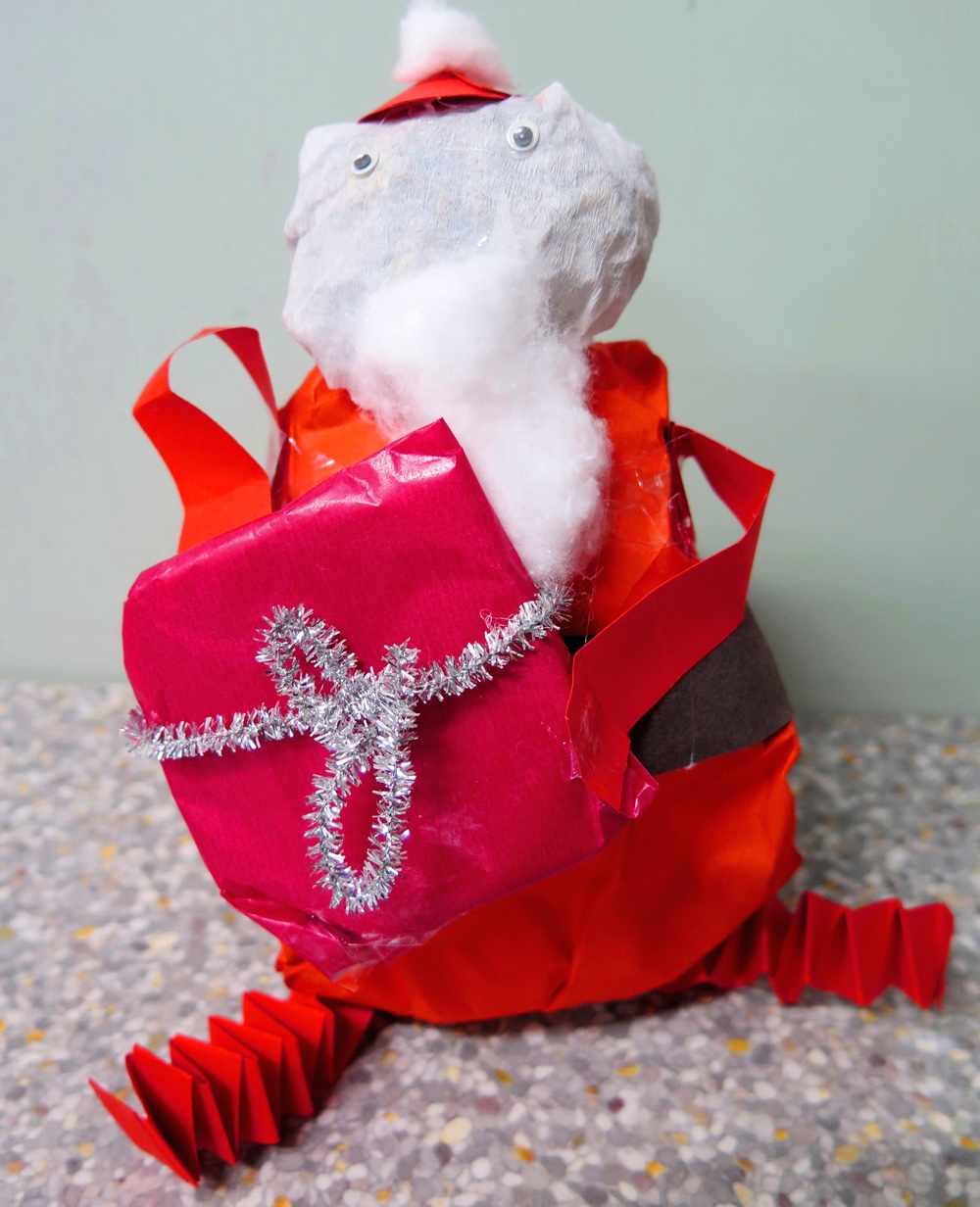
Where might the sessions be used?
- Classrooms (as part of art lessons or workshop)
- After school art club or AG&T group
- Community groups (i.e. Scouts and Guides)
- Gallery, Museum or Art Organisation workshop
- SEND, with support.
- EAL- demonstrated stages so ‘English as an Additional Language’ students can access and follow. Key words could be displayed and used for features of the body, clothes, colours or materials.
Materials and Equipment Preparation
- Scissors
- Glue gun or double sided sticky pads, masking tape, sellotape
- Cotton wool, cotton wool pads or wool or cut pieces from a mop or shredded paper
- Red/white paper- photocopy paper or crepe paper
- Thin red card
- Black paper
- Newspaper
- Small piece of gold paper or tin foil
- Pipe cleaners- optional
- Googly eyes or black pen
- Elastic
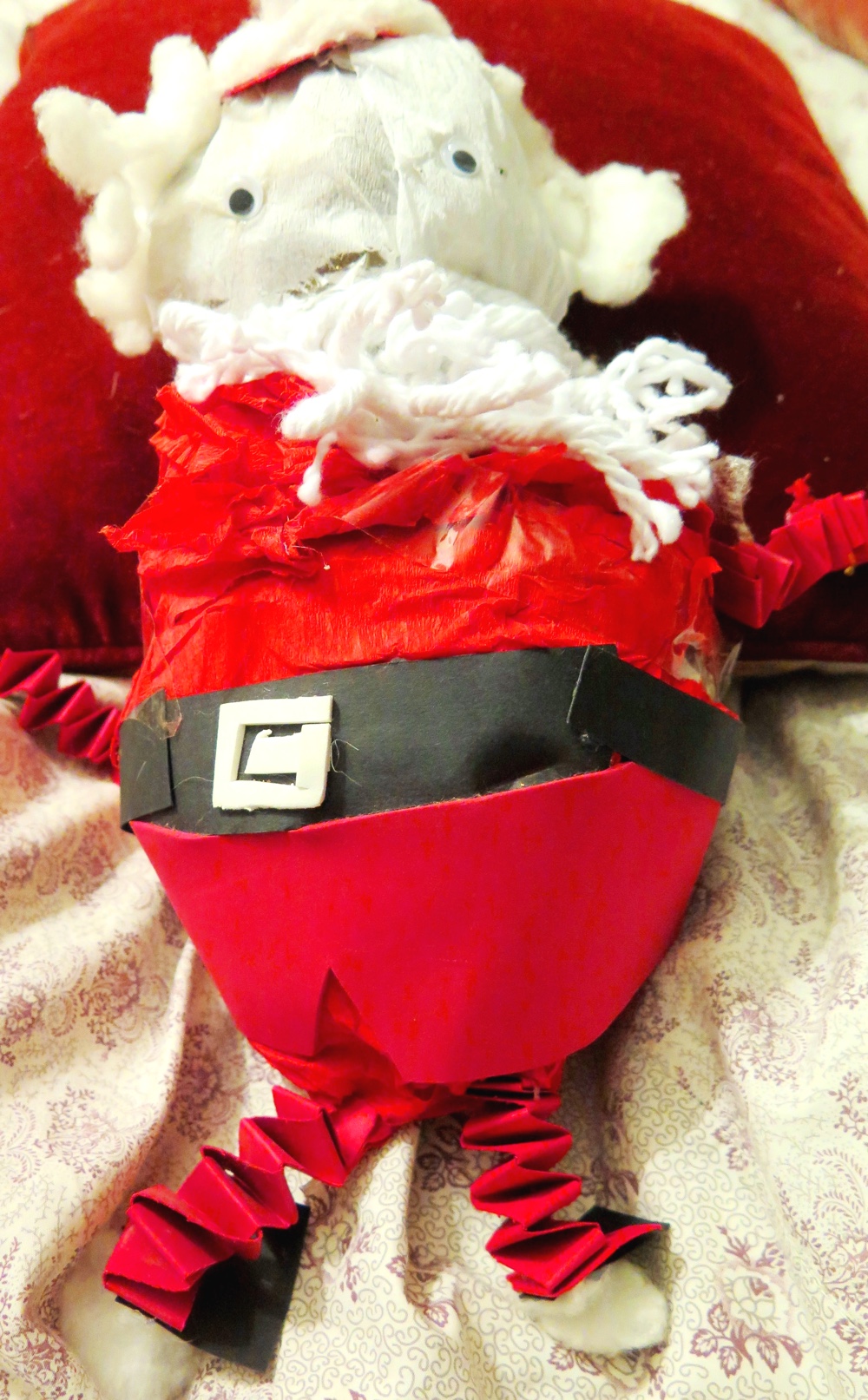
To access all content, I would like to join as…
AccessArt is a UK Charity and we believe everyone has the right to be creative. AccessArt provides inspiration to help us all reach our creative potential.
